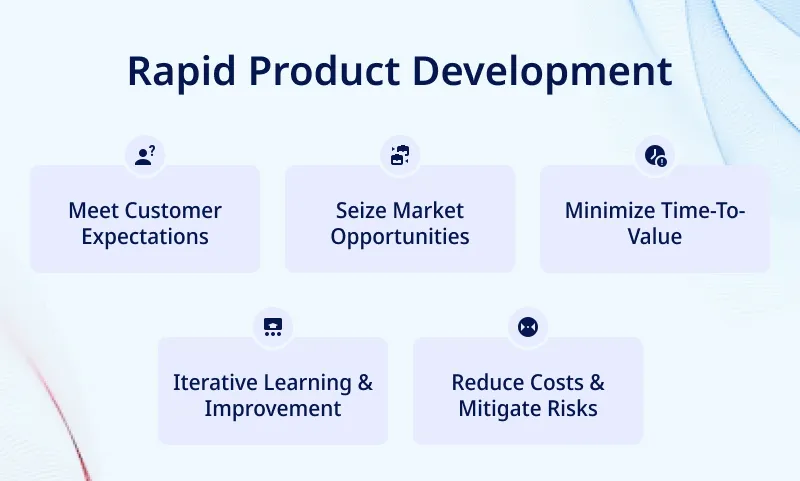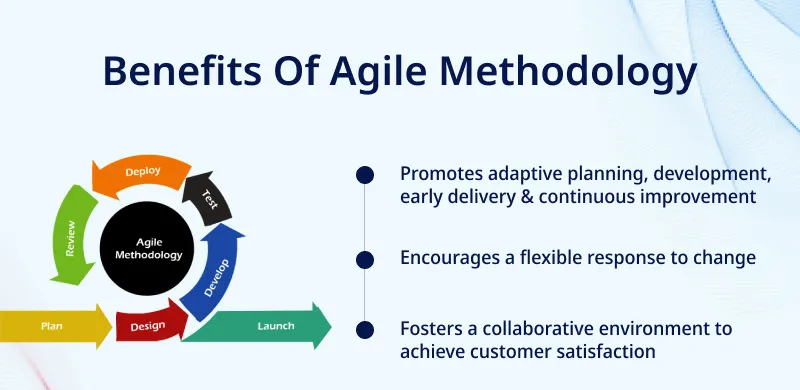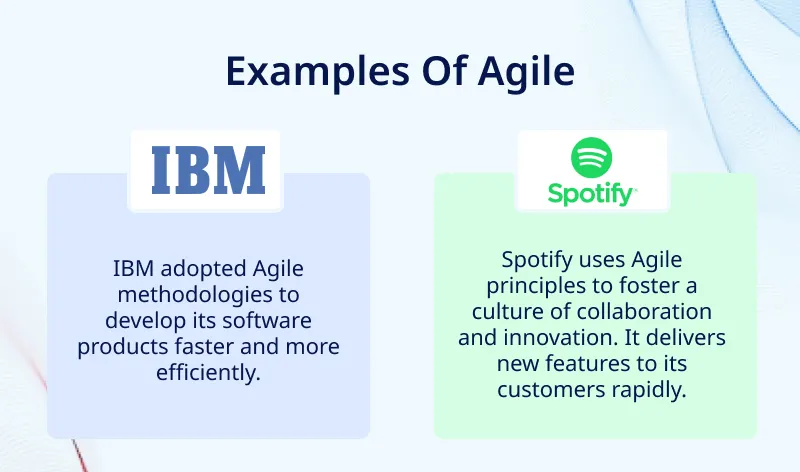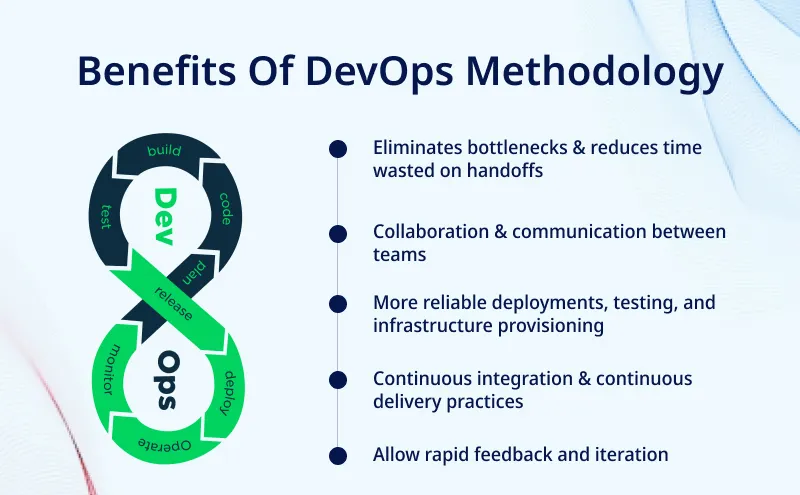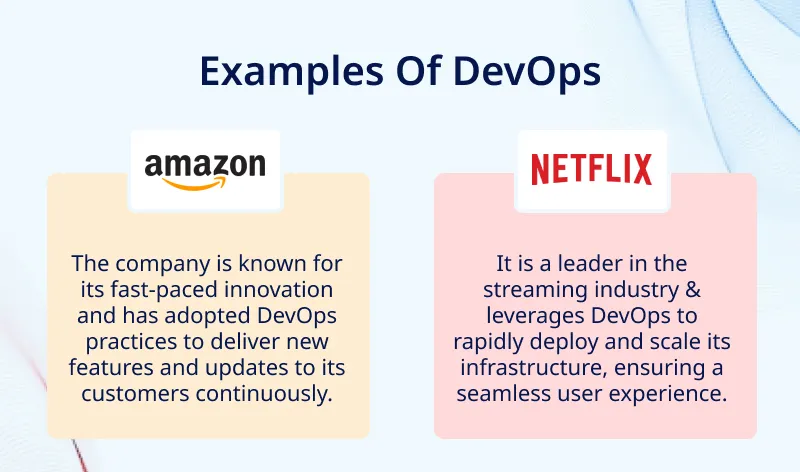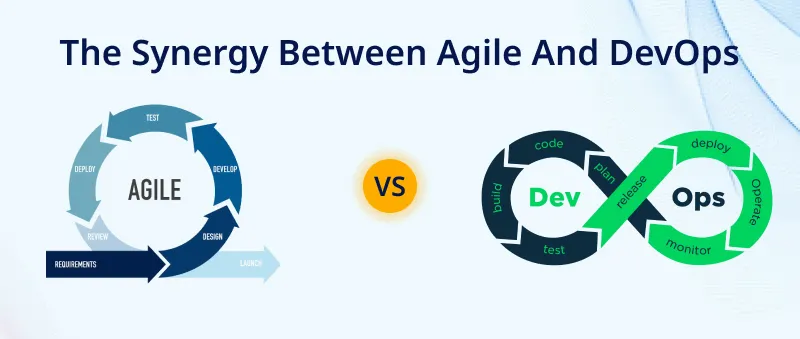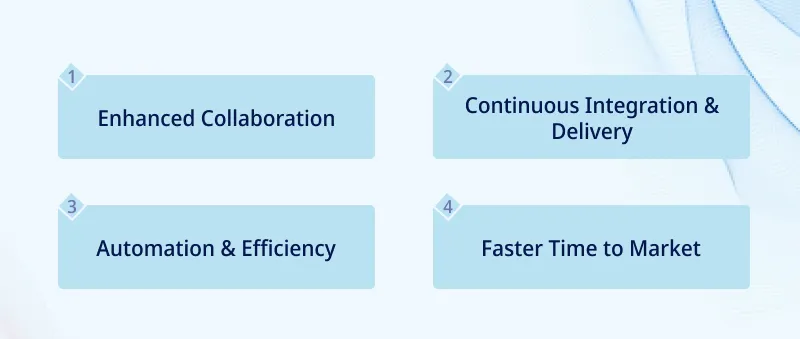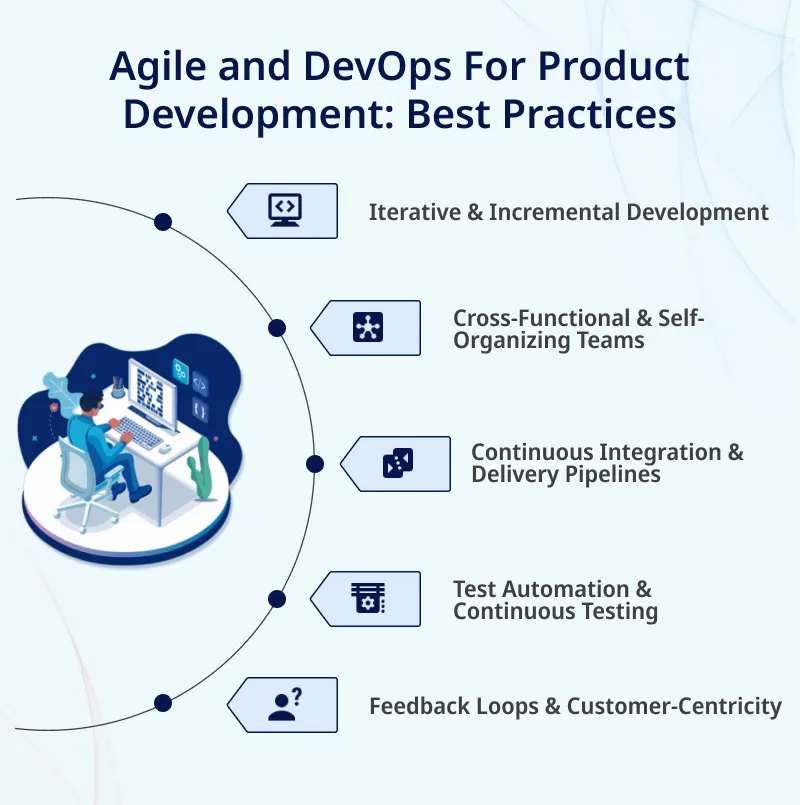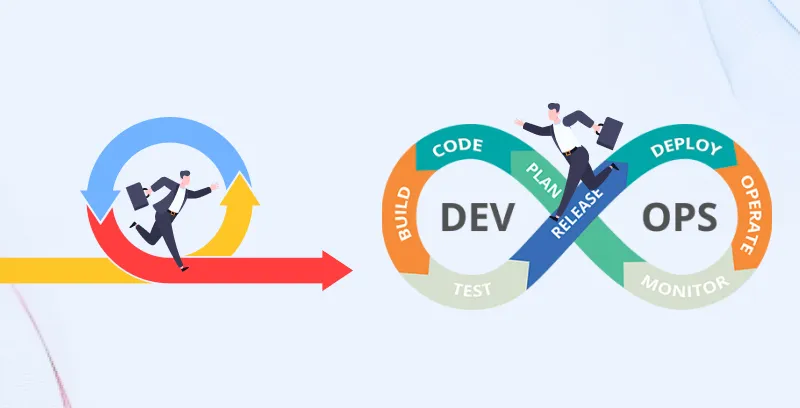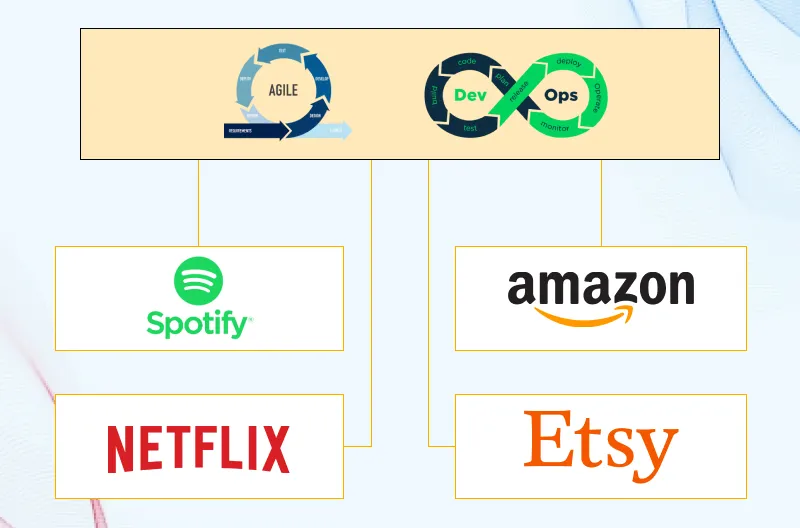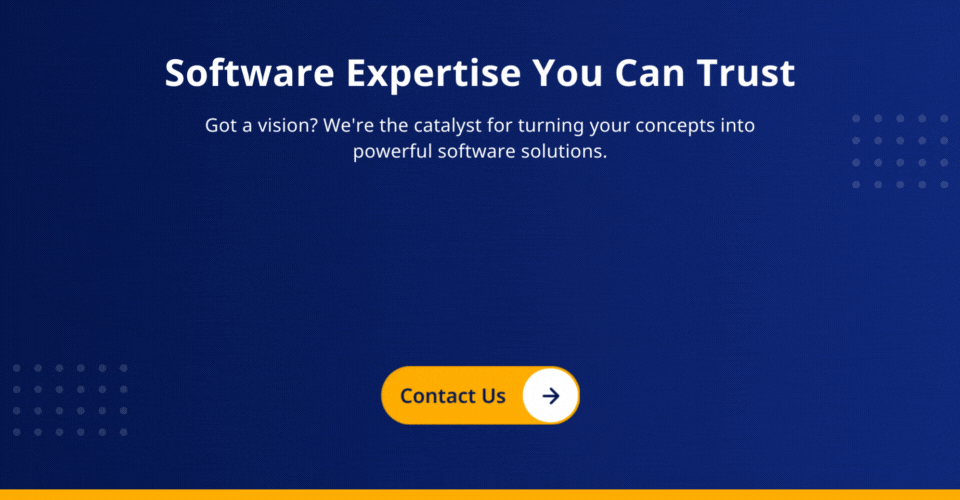Are you frustrated with the lengthy product development cycles that drag on forever?
Do you struggle to keep up with customer demands & market trends?
If yes, this blog post is for you.
Businesses today need to be agile & responsive if they want to stay ahead of the competition. That’s why Agile and DevOps come into play.
Agile and DevOps for product development have revolutionized the way we develop products. These practices enable organizations to deliver high-quality software and meet customer expectations rapidly.
In this blog post, we will cover how Agile and DevOps approaches drive rapid product development and highlight the importance of embracing these modern methodologies for your business project.
Importance of Rapid Product Development
Rapid product development is about speed, agility, adaptability, and customer-centricity. It is the key to staying ahead, delighting customers, and thriving in today’s dynamic market landscape.
Why Modern Businesses Need Rapid Product Development?
Meet Customer Expectations
Rapid product development allows businesses to stay ahead by swiftly responding to customer feedback, reducing time-to-market, and delivering value-driven solutions.
Seize Market Opportunities
The process enables businesses to capitalize on market opportunities by quickly adapting their product offerings.
Minimize Time-To-Value
The longer it takes to bring a product to market, the greater the risk of missing out on market opportunities or being surpassed by competitors.
Rapid product development allows businesses to minimize time-to-value by:
- Streamlining processes
- Embracing continuous integration & delivery
- Maintaining focus on delivering customer value
Iterative Learning & Improvement
Rapid product development promotes an iterative approach to building products. By leveraging Agile and DevOps for product development, businesses can quickly gather users’ feedback, make necessary improvements, and release updated versions.
Reduce Costs & Mitigate Risks
Agile and DevOps for product development emphasize robust testing, automation, and continuous monitoring.
Rapid product development, when done right, enables organizations to optimize resources, minimize waste, and achieve cost efficiencies.
Embrace Agile and DevOps to deliver products faster
Agile Approach: An Overview
Agile is a project management & product development approach centered around iterative progress, flexibility, customer feedback, and high-quality output.
Let’s look at the core principles of agile that mainly emphasize on:
- Individuals and interactions over processes and tools
- Working software over comprehensive documentation
- Customer collaboration over contract negotiation
- Responding to change by following a plan
Popular Agile Methodologies & Frameworks
There are several agile methodologies and frameworks, each with its unique approach but sharing the core agile principles.
- Scrum
- Kanban
- Lean
- Extreme Programming (XP)
Key Agile Practices & Their Role in Rapid Product Development
Agile practices foster communication, collaboration, and continuous improvement, accelerating product development.
Key Agile practices include:
- Daily stand-ups: Keep everyone informed about the project’s progress and help identify any blockers.
- Sprint, reviews & retrospectives: Provide opportunities for the team to reflect on the completed work and identify areas for improvement.
Also Read: DevOps For Startups: Best Practices And Real-Life Examples To Accelerate Growth
DevOps: An Overview
DevOps is a collaborative approach that combines software development and IT operations to streamline the entire product development lifecycle.
It aims to break down silos between development and operations teams, fostering a culture of collaboration, communication and shared responsibility.
The core principles of DevOps include:
DevOps encompasses several vital components that are essential for its success.
- Collaboration: Encourage cross-functional teams to work together towards a common goal.
- Automation: Enable automation of repetitive tasks, deployment pipelines, and infrastructure provisioning.
- Continuous integration: Ensure to integrate the code regularly into a shared repository.
- Continuous delivery: Ensure that software changes are always in a deployable state.
Role of DevOps in Enabling Rapid Product Development
DevOps enables rapid product development by fostering a culture of agility, collaboration, and continuous improvement.
It eliminates delays caused by handoffs and promotes faster decision-making by breaking down silos and promoting cross-functional teams in an agile software development company.
Automation in DevOps reduces manual errors and accelerates the deployment process, allowing for faster feedback loops and quicker iterations.
Note: Agile and DevOps go hand-in-hand to fuel rapid product development.
Discover the power of Agile and DevOps in rapid product delivery
Synergy Between Agile And DevOps
Agile and DevOps are two robust methodologies, when combined, create a synergistic effect that enhances the speed, quality, and efficiency of product development.
Agile focuses on iterative development, customer collaboration, and flexibility, while DevOps emphasizes collaboration, automation, and continuous delivery.
Agile and DevOps for product development share several values and principles that make them highly compatible. These are listed below:
- Both methodologies prioritize customer satisfaction and value delivery.
- They emphasize the importance of cross-functional teams, collaboration, and communication.
- They promote a culture of continuous improvement, where teams learn from feedback and adapt their processes accordingly.
- They create a cohesive and efficient approach to product development by aligning their values and principles.
Benefits of Combining Agile and DevOps for Product Development
The combination of Agile and DevOps offers numerous benefits for rapid product development, as listed below:
Enhanced Collaboration
Agile and DevOps for product development foster collaboration between development, operations, and other stakeholders. This collaboration breaks down silos, improves communication, and enables teams to work together towards a common goal.
By sharing knowledge and responsibilities, teams can make faster decisions and resolve issues more efficiently.
Continuous Integration & Delivery
Agile’s continuous integration and DevOps’ continuous delivery practices ensure that software changes are regularly integrated, tested, and delivered to customers. This enables rapid feedback loops, quick iterations, and faster time to market.
Continuous integration and delivery also reduce the risk of errors and enable teams to respond quickly to changing customer needs.
Automation & Efficiency
DevOps emphasizes automation to streamline processes, reduce manual errors, and increase efficiency. By automating tasks such as testing, deployment, and infrastructure provisioning, teams can save time and effort, allowing them to focus on value-added activities.
Automation enables faster and more reliable deployments, ensuring a smooth and efficient product development lifecycle.
Faster Time to Market
The combination of Agile and DevOps accelerates the product development cycle, enabling organizations to quickly bring new features and updates to the market.
By embracing iterative development, continuous integration, and continuous delivery, teams can deliver value to customers in shorter cycles, allowing for rapid experimentation, feedback, and learning.
How Agile and DevOps Drive Rapid Product Development?
By embracing these practices, organizations can fuel innovation, improve customer satisfaction, and gain a competitive edge in today’s fast-paced digital landscape.
Some Agile and DevOps practices used for rapid product development are listed below:
Iterative & Incremental Development
Agile methodologies promote iterative and incremental development, breaking the product development process into smaller, manageable chunks called iterations or sprints.
This approach allows for faster delivery of working software and enables teams to gather feedback early in the development cycle.
Organizations can rapidly adapt to changing requirements and deliver value to customers by continuously iterating and refining the product based on customer feedback.
Cross-Functional & Self-Organizing Teams
Agile and DevOps encourage forming cross-functional teams that include members with diverse skills and expertise. These teams are self-organizing, meaning they have the autonomy to make decisions and manage their work.
Organizations can eliminate handoffs and foster collaboration by bringing together individuals from different disciplines, such as:
- Development
- Operations
- Quality assurance
This collaborative environment enables faster decision-making, efficient problem-solving, and seamless coordination, all contributing to rapid product development.
Continuous Integration & Delivery Pipelines
DevOps practices emphasize continuous integration & delivery (CI/CD) pipelines, which automate integrating code changes, running tests, and deploying software.
- Continuous integration ensures that code changes are regularly merged into a shared repository, allowing for early detection of integration issues.
- Continuous delivery, on the other hand, automates the deployment process, enabling teams to release software updates quickly and reliably.
Hence, organizations can reduce manual errors, accelerate feedback loops, and achieve faster time to market by automating these processes.
Test Automation & Continuous Testing
Organizations can quickly and reliably validate software changes by automating tests. They ensure that new features and updates refrain from introducing regressions or bugs.
Continuous testing, which involves running tests throughout the development process, enables teams to identify issues early and address them promptly.
Test automation and continuous testing contribute to faster feedback loops, improved software quality, and increased confidence in the product’s stability, all essential for rapid product development.
Feedback Loops & Customer-Centricity
Agile and DevOps for product development prioritize customer feedback and emphasize on a customer-centric approach to product development.
Regular feedback loops, such as sprint reviews and demos, allow teams to gather insights from customers and stakeholders, enabling them to validate assumptions, refine requirements, and make informed decisions.
Organizations ensure that the product meets their needs & expectations by continuously seeking feedback and involving customers throughout development. This customer-centric approach drives rapid product development.
Also Read: 9 Reasons Agile Software Development Is Best For Modern Businesses
Overcoming Challenges In Implementing Agile & DevOps
Implementing Agile and DevOps practices often comes with its fair share of challenges. Some common challenges include:
Resistance to Change: People may be accustomed to traditional working methods and resist adopting new methodologies and practices.
Siloed Mindset: Siloed mindsets hinder collaboration and communication, crucial for successful Agile and DevOps implementation.
Lack of Skills & Knowledge: Organizations may face challenges in finding or developing talent with the necessary expertise to implement and sustain these practices effectively.
Strategies to Address These Challenges
Organizations can employ the following strategies to address the above challenges:
Education & Training: Help individuals understand the benefits and overcome resistance. This includes:
- Workshops
- Seminars
- Coaching sessions
Communication & Transparency: Help alleviate resistance since regular updates and sharing success stories can build confidence and trust.
Leadership: When leaders actively embrace and demonstrate Agile and DevOps practices, it encourages others to follow suit.
Techniques for Integrating Agile and DevOps into existing workflows
Integrating Agile and DevOps for product development into existing workflows requires careful planning and execution.
Some techniques to facilitate this integration include
Pilot Projects: Start with small pilot projects to test Agile and DevOps practices within a controlled environment. This allows teams to learn and adapt without disrupting the entire organization.
Incremental Adoption: Gradually introduce Agile and DevOps practices into existing workflows, allowing teams to adapt and learn. This approach minimizes disruption and allows for continuous improvement.
Collaborative Planning: Involve all stakeholders in the planning process to ensure alignment and buy-in. Collaborative planning sessions help identify dependencies, set realistic expectations, and establish a shared understanding of goals and priorities.
Scaling Agile and DevOps Practices for Larger Projects/Organizations
Implementing Agile and DevOps practices may face challenges. Still, organizations can overcome these hurdles with the right strategies, techniques, and scaling approaches.
Agile Frameworks: Adopting Agile frameworks like SAFe (Scaled Agile Framework) or LeSS (Large-Scale Scrum) can guide scaling Agile practices across multiple teams and projects.
DevOps Automation: Invest in automation tools and infrastructure to support the scaling of DevOps practices. Automation helps streamline processes, reduce manual effort, and ensure team consistency.
Communication & Collaboration: Establish clear communication channels and foster team collaboration to ensure alignment and coordination. Regular cross-team meetings, shared documentation, and knowledge-sharing platforms can facilitate effective collaboration.
Implement Agile and DevOps practices for rapid product development
Real-World Examples Of Agile & DevOps: Success Stories
Agile and DevOps for product development have proven to be game-changers for organizations seeking rapid product development.
Let’s explore some case studies of organizations that have achieved rapid product development using Agile and DevOps are listed below:
Spotify
It is a popular music streaming platform whose engineering teams work in small, autonomous squads that follow Agile principles. This allows them to respond to customer needs and deliver new features rapidly and quickly.
Their DevOps practices ensure seamless collaboration between development and operations, enabling frequent deployments and continuous delivery of updates to millions of users.
Amazon
It is a global e-commerce giant that pioneered adopting Agile and DevOps practices to drive rapid product development.
Amazon has been able to iterate on its products continuously, rapidly respond to market demands, and maintain its position as a leader in the industry by combining Agile and DevOps.
Netflix
It is a leading streaming service provider that has leveraged Agile and DevOps product development services to revolutionize how entertainment content is delivered.
Netflix has been able to rapidly innovate, personalize content recommendations, and stay ahead in the highly competitive streaming industry by adopting Agile and DevOps.
Etsy
It is an online marketplace for handmade and vintage goods which has successfully implemented Agile and DevOps practices to drive rapid product development.
Etsy has been able to iterate on its platform, improve user experience, and rapidly adapt to changing market trends by embracing Agile and DevOps.
Conclusion
The iterative & incremental approach of Agile methodology allows for quick feedback loops. It enables teams to adapt & refine their products based on customer needs.
On the other hand, DevOps practices (including continuous integration and delivery, automation, and test automation) ensure that software changes are delivered quickly and reliably. It reduces overall time to market and improves product quality.
The combination of Agile and DevOps for product development allows businesses to deliver high-quality solutions in less time, respond to varying market demands more effectively, and achieve high success in this competitive market.
What are you waiting for?
Hire product developers from us to build your next project. ValueCoders (the most awarded agile offshore software development company) has been catering to the versatile and advanced product development needs of clients for 18+ years..

